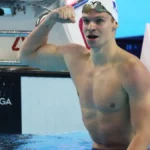Amid the Edgbaston and Headingley run-fests during the Anderson-Tendulkar Trophy, one problem still raises eyebrows, early wear and tear on the Dukes Ball. Cricketers, individually or in batches, regularly approach the umpires to request a ball change. But every time the demand is refused, the Duke’s Ball continues to run through the metal ring gauge.
A Pattern Emerges: Early Appeals and Softening Balls
What’s causing eyebrows to be raised is not so much the number but the timing of such complaints, some as early as the 16th over. Bowlers are struggling to get swing, seam, or bounce after a mere short stint of play, indicating the Dukes Ball is losing shape and bite far too soon.
Rishabh Pant’s Frustration: A Snapshot of Growing Player Discontent
At Headingley, India’s Rishabh Pant lost his cool. After another request for a new ball was refused, he threw away the Duke’s Ball in anger, incurring a warning from the match referee. Later, Pant clarified,
“It’s frustrating. When the ball gets soft, it doesn’t do anything. Then once it is replaced, suddenly it’s seeming. It’s not fair on either side.”
The Duke’s Ball’s Declining Reputation: From Strength to Weakness
No longer is the Duke’s Ball being held in the same esteem for its prominent seam, swing-inducing stitching, and durability of hardness. In various conditions, not merely in England, but around the Caribbean as well, players and coaches alike have complained that the ball becomes soft and loses its integrity too rapidly, disrupting the equilibrium between ball and bat.
Ben Stokes Weighs In: Is It Time to Rethink the Ball Gauge?

England captain Ben Stokes chimed in with a pragmatic recommendation: perhaps the device used to check the ball’s shape, the metal ring gauge, is the culprit.
“The Duke’s Ball is stitched by hand, as opposed to the Kookaburra. Why are we then employing the identical gauge? Perhaps it’s time to re-examine the device itself,” Stokes stated.
He also pointed to inconsistencies in the measuring gear, stating,
“I don’t think the rings we use are even specifically made for the Duke’s Ball. If the ball fits, we carry on. If it doesn’t, only then do we get a new one.”
Demands for Change: Smaller Gauge or Improved Manufacturing?
India’s vice-captain also shared the view, suggesting that the gauge size be kept the same, but with a reduced tolerance.
The ball, losing its shape in this way, had never occurred before. It’s a serious issue. Perhaps the gauge should be a bit smaller to account for how readily these balls are losing their shape.”
Flat Pitches, Soft Balls: A Bowler’s Nightmare
Adding to the problem is the style of pitches in Bazball, flat, scoring surfaces that already do not provide much assistance to bowlers. Without a tough Dukes Ball, the match then becomes even more one-sided. As an example, at Edgbaston, England were reduced to 84 for 5 with the new ball but fought back to achieve a 300+ partnership without much struggle once the ball relaxed.
A Game Tilted by a Failing Ball
In a sport predicated on tiny margins, the early wear of the Duke’s Ball is a discrepancy cricket can ill afford. As bowlers become increasingly afflicted and captains become louder, the problem needs solving now, either through improved manufacturing, tighter gauge tolerances, or the implementation of new testing standards.
Why This Matters for the Future of Test Cricket
The ball’s quality and performance have a direct impact on the integrity of Test cricket. If the ball loses its most distinctive features, swing, seam, and resilience, too soon in the game, it undermines the bowlers and makes each Test a batting circus. In the interests of balance, drama, and fair play, this problem requires a solution and pronto.
ALSO READ: SUS vs KEN: Evison’s Heroics Guide Kent To Vitality Blast Thriller Victory Over Sussex























